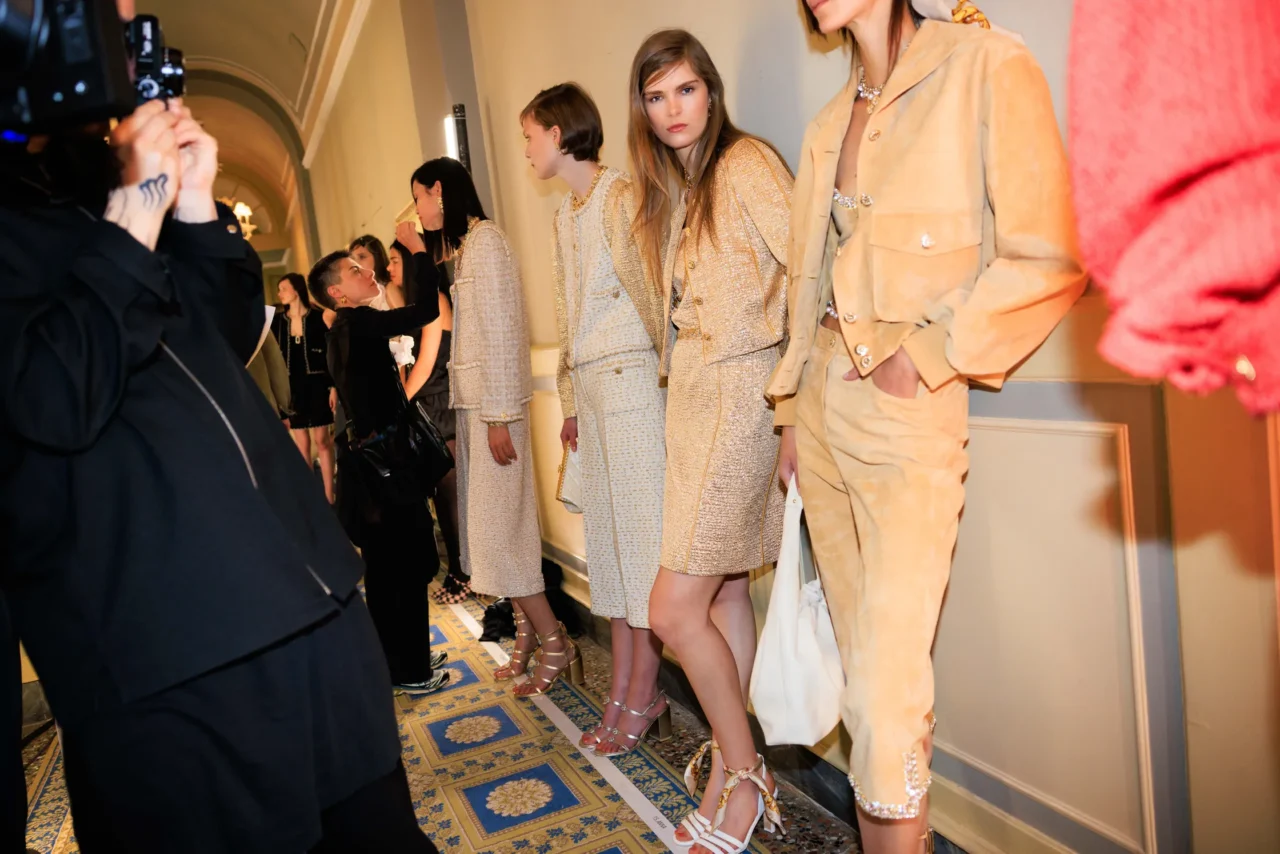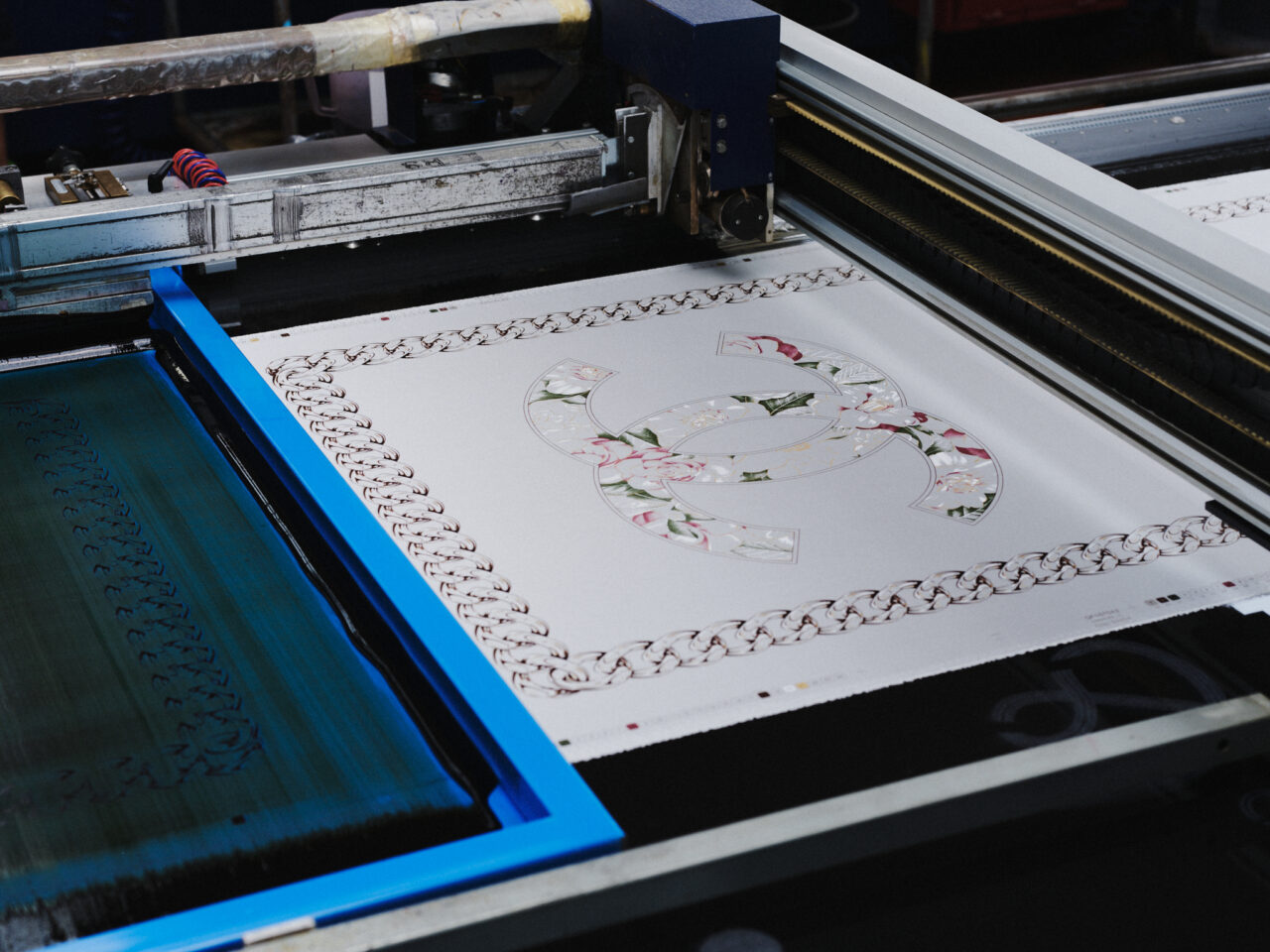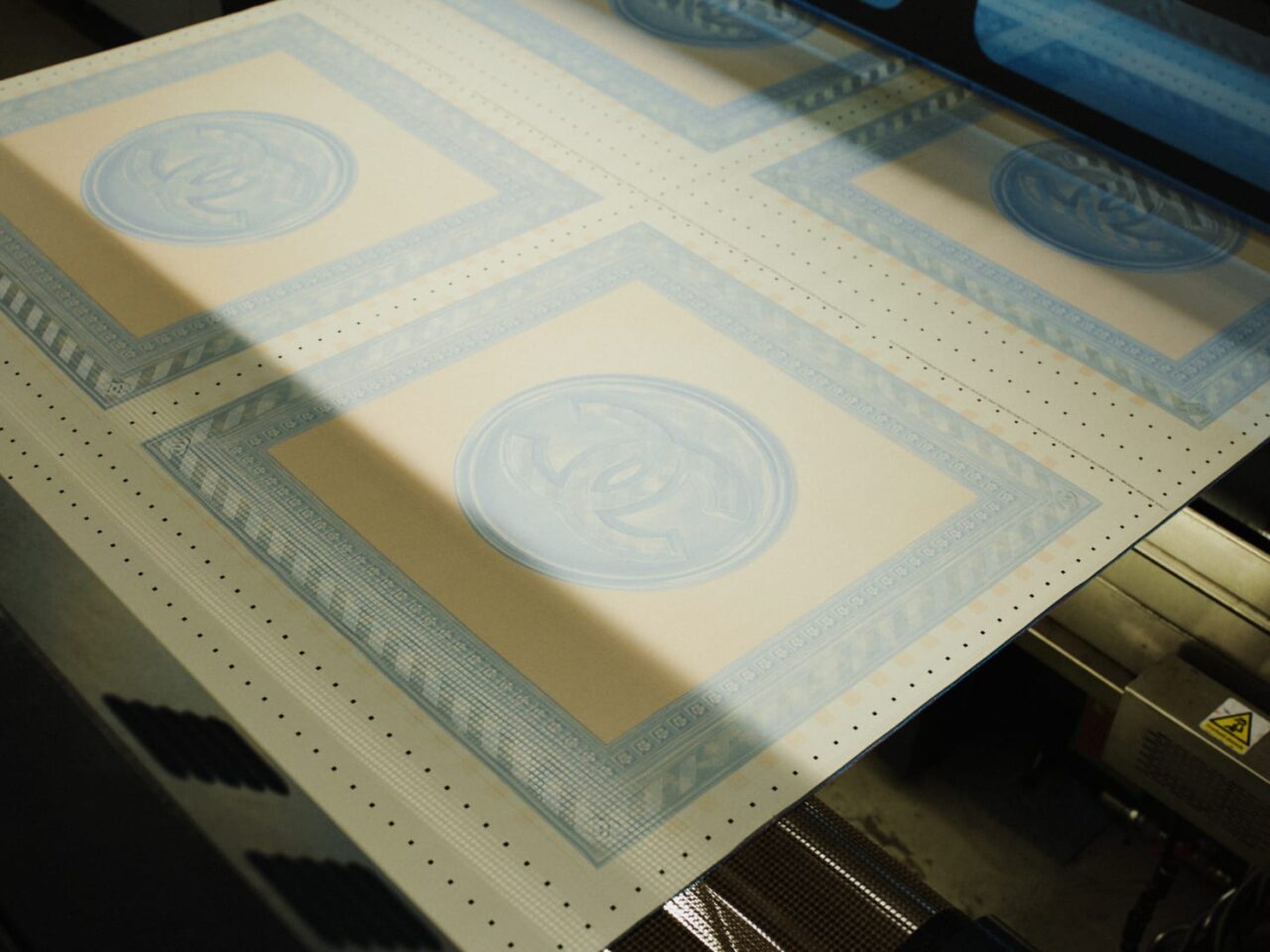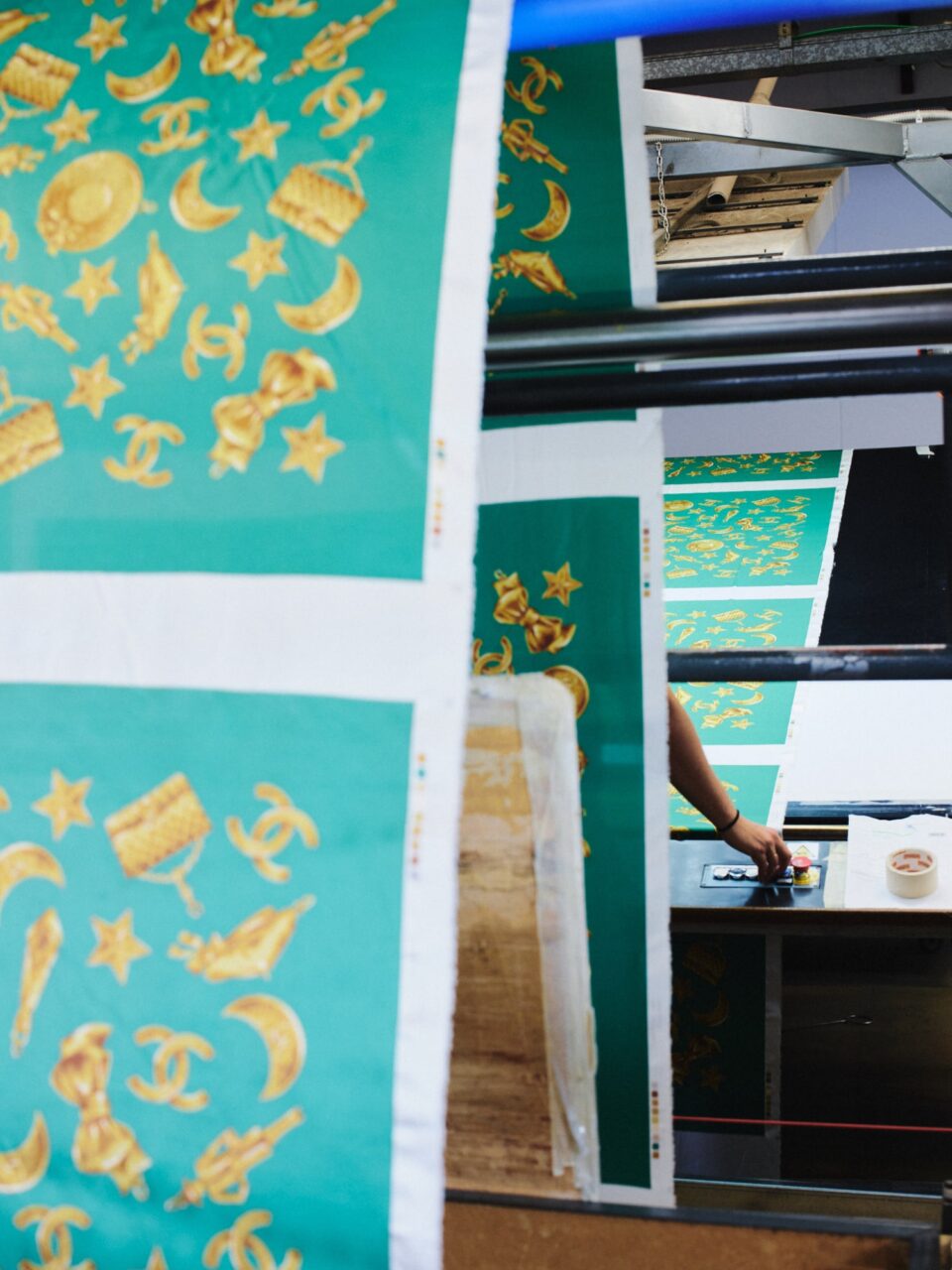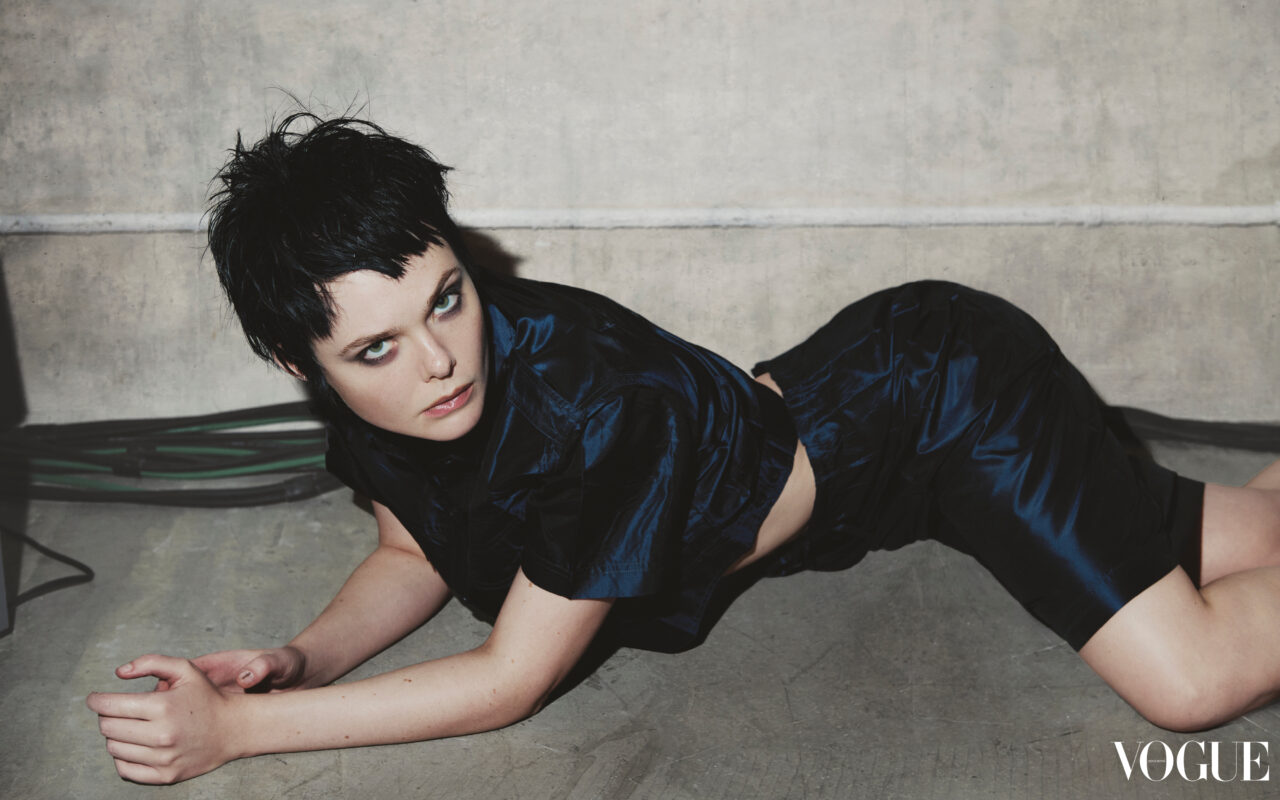When CHANEL’s Cruise 2025/2026 Replica show arrives in Singapore on November 4, 2025, it will carry with it the echoes of Lake Como—the site of its original debut earlier this year. There, under the dappled northern Italian sunlight, silk scarves transformed into ankle straps for heeled sandals graced the runway, each one a testament to the artistry of Mantero Seta, CHANEL’s trusted silk manufactory.
This collaboration, which has spanned over five decades, was further solidified in April when CHANEL announced its acquisition of a 35% stake in the Como-based manufacturer. The decision, made just weeks before the Cruise collection’s debut, reflects CHANEL’s commitment to safeguarding its supply chain while honouring the heritage and savoir-faire of one of Italy’s most storied silk makers. Mantero, which has been crafting silk for CHANEL blouses and printed scarves since 1973, is more than a partner—it is a vital thread in the fabric of CHANEL’s creations.
Backstage at CHANEL's Cruise 2025/2026 show
Photo: Acielle / StyleDuMonde
Backstage at CHANEL's Cruise 2025/2026 show
Photo: Acielle / StyleDuMonde
The History Of Mantero
Mantero’s story began in 1902, when Riccardo Mantero left his native Piedmont and established a silk warehouse near the shores of Lake Como. The region, known as “il distretto della seta” or the silk district, had long been a hub for sericulture, its mulberry trees providing the perfect environment for silkworms. Though the district’s mulberry cultivation suffered a devastating blow during the “pepper disease” epidemic, the art of silk-making endured. Riccardo Mantero’s vision and dedication laid the foundation for a legacy that would span four generations.
By the 1940s, the Mantero family business had expanded into weaving. In the 1960s, it introduced silk printing, a move that cemented its reputation as one of the world’s leading silk specialists. The company’s partnership with CHANEL, which began in 1973, marked the start of a fruitful collaboration that now spans over 50 years. Today, Mantero is still a family-run business, managed by Riccardo’s great-grandchildren, Franco and Lucia, who oversee a team of 550 artisans across two expansive sites near Lake Como.
Craftsmanship at Mantero
At its heart, Mantero is a manufactory driven by craftsmanship and innovation. Its weaving operations are housed in one of its two sites, where silk sourced from GOTS-certified Chinese producers arrives in reels, ready to be transformed. Whether dyed or undyed, the silk is woven using traditional looms, sometimes combined with wool, cashmere, or cotton to create intricate jacquard patterns. The result is a fabric that feels as luxurious as it looks, a hallmark of CHANEL’s collections.
The second site is dedicated to silk printing, where Mantero’s artisans work closely with CHANEL’s design studios to bring the House’s aesthetic visions to life. This process is a delicate balance of tradition and modernity. On one hand, the manufactory employs frame printing, a meticulous technique where colours are applied one by one using photoengraving frames. On the other hand, it has embraced inkjet printing, a cutting-edge technology that allows for double-sided prints and precise alignment of motifs with jacquard patterns. Both methods ensure that every piece of silk meets the exacting standards of CHANEL’s creative directors.
Once the silk is printed, it undergoes a series of finishing steps—steaming, washing, and ironing—to fix the colours and achieve the desired texture. These final touches transform the fabric into something extraordinary, ready to be cut, sewn, and styled into CHANEL’s iconic garments and accessories.
Mantero’s commitment to preserving its heritage extends beyond its production techniques. The manufactory maintains an extraordinary archive, a 2,500-square-meter treasure trove containing over 200,000 items. This collection includes printed fabrics, scarves, and designs from Mantero’s own history, as well as antique bandanas and 19th-century kimonos. For CHANEL’s design team, the archive is an endless source of inspiration, a bridge between the past and the future.
In recent years, Mantero has also become a leader in sustainability, an aspect that aligns with CHANEL’s broader commitment to responsible luxury. The manufactory has implemented eco-responsible practices such as developing plant-based alternative fabrics, reusing silk scraps, and reducing water consumption by half. Solar panels and LED lighting have been installed at its sites, further reducing its environmental footprint. Mantero also prioritises the well-being of its employees, conducting regular audits to ensure diversity, inclusivity, and fair working conditions. These efforts are detailed annually in a comprehensive sustainability report, underscoring Mantero’s dedication to both craftsmanship and ethics.
As the Cruise 2025/2026 collection heads to Singapore for the Replica show, it carries the legacy of the storied silkmaker, serving as a reminder that behind every exquisite garment lies the passion and dedication of artisans like those at Mantero.




